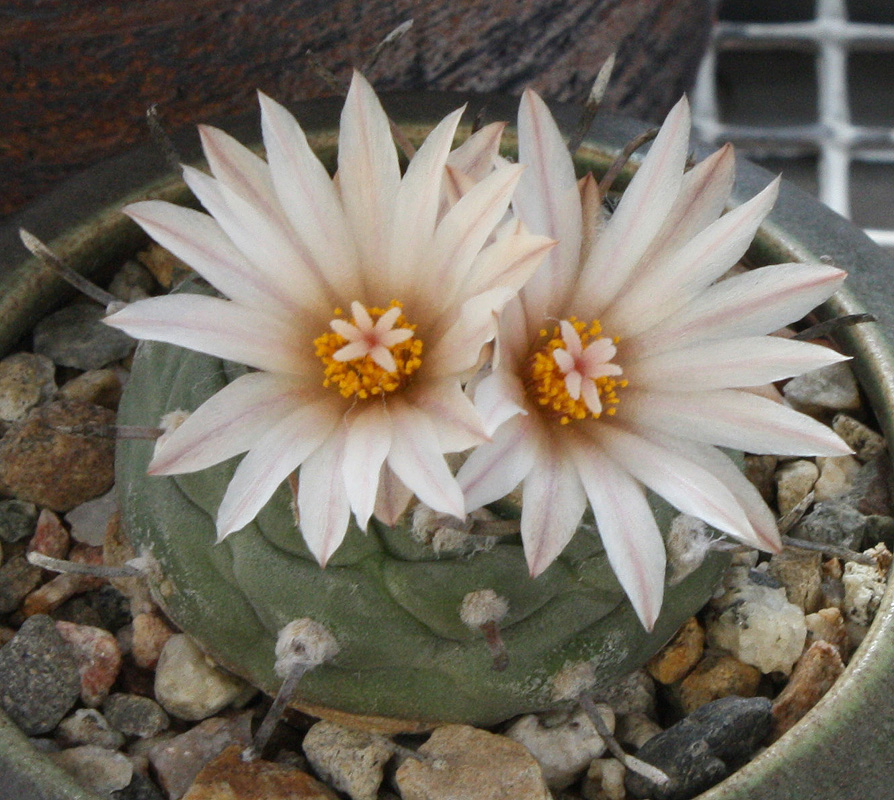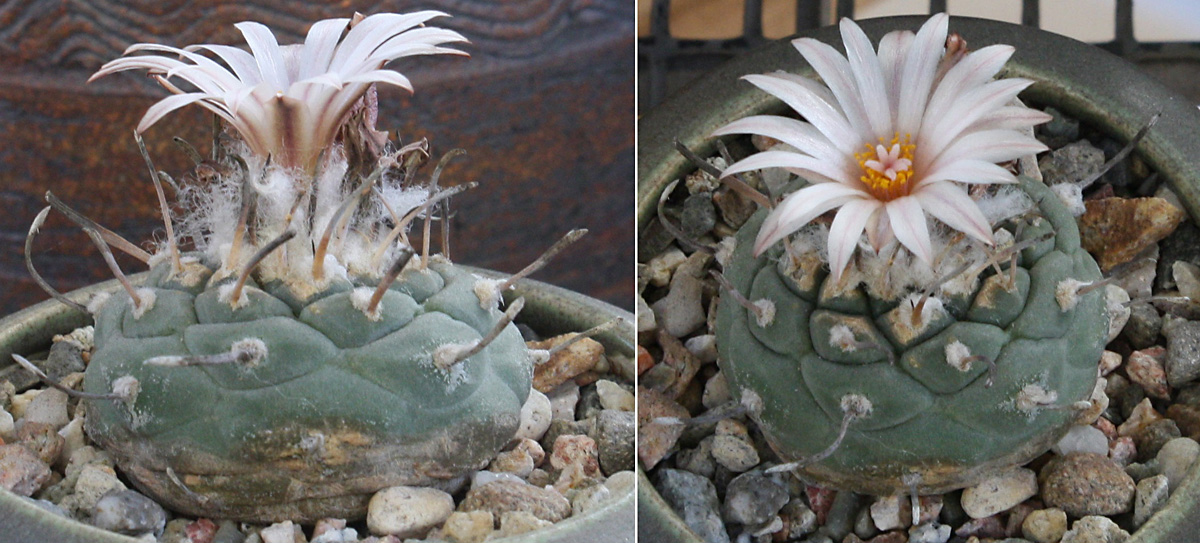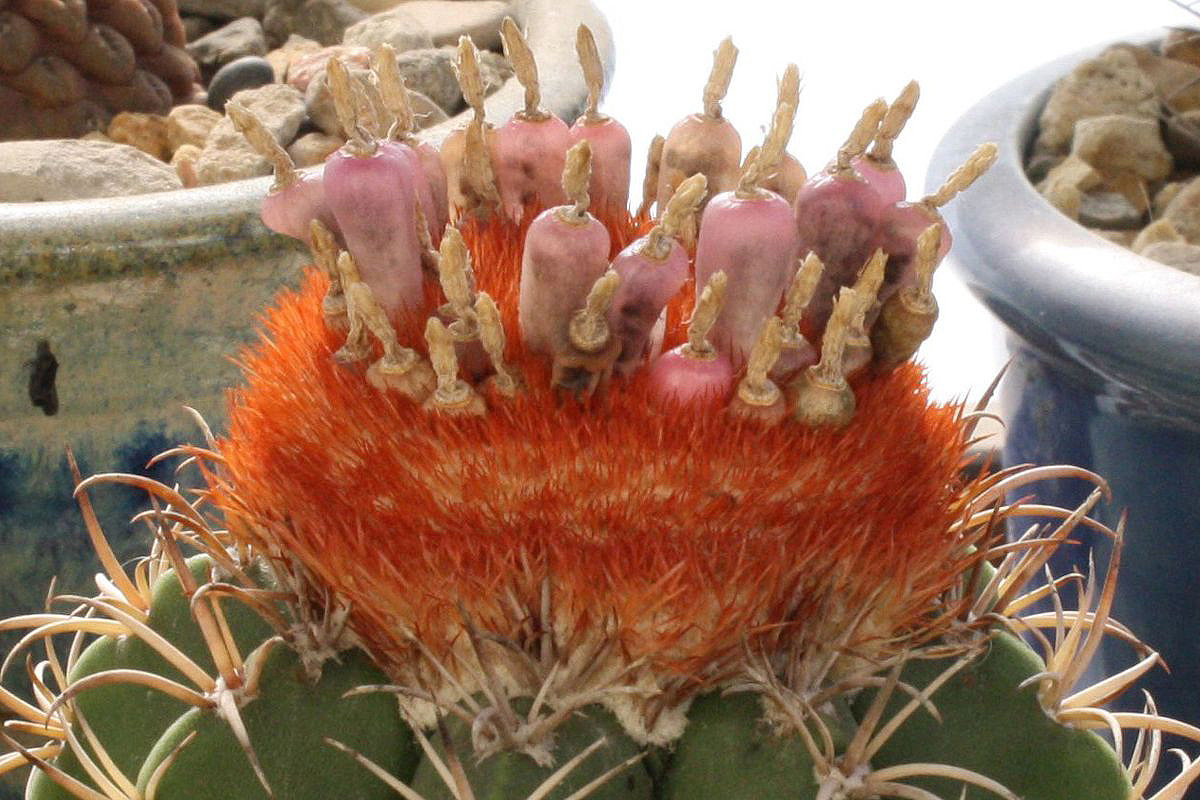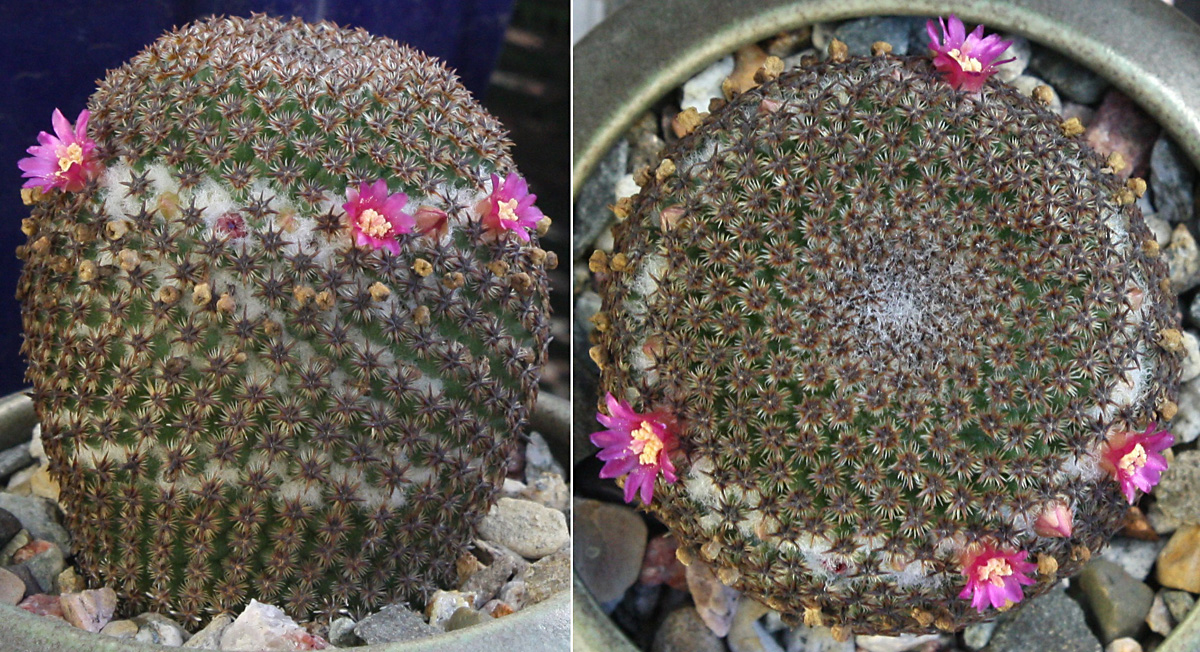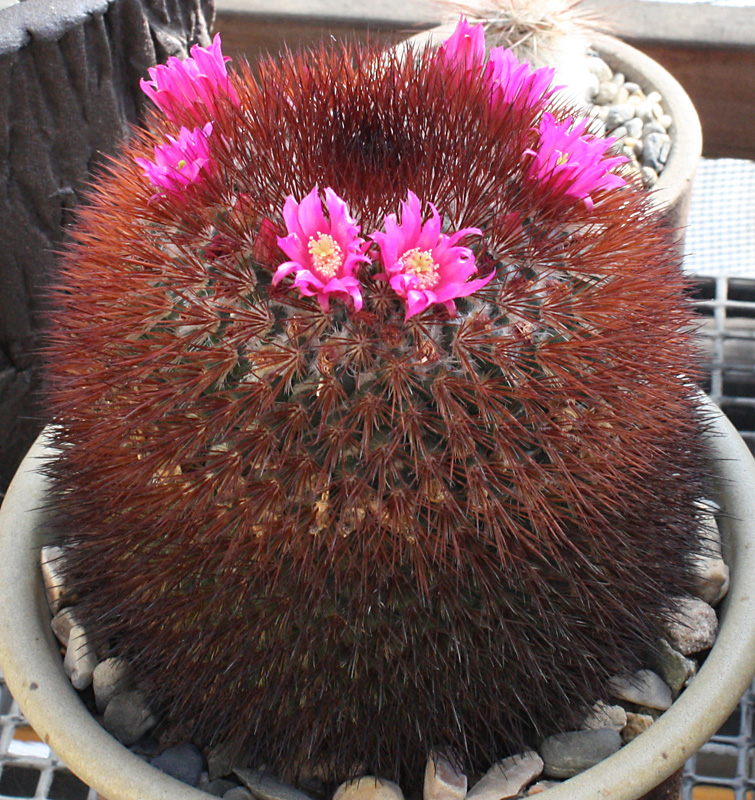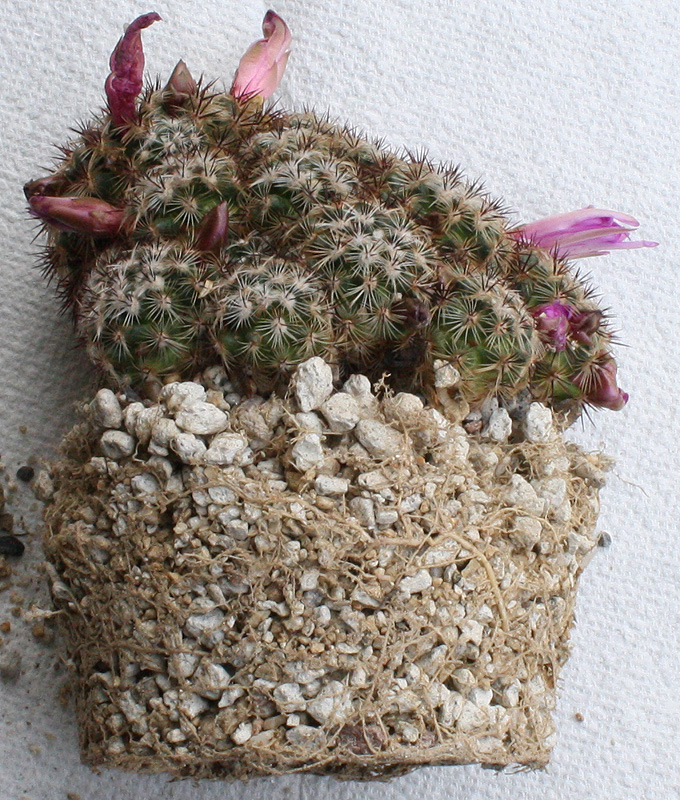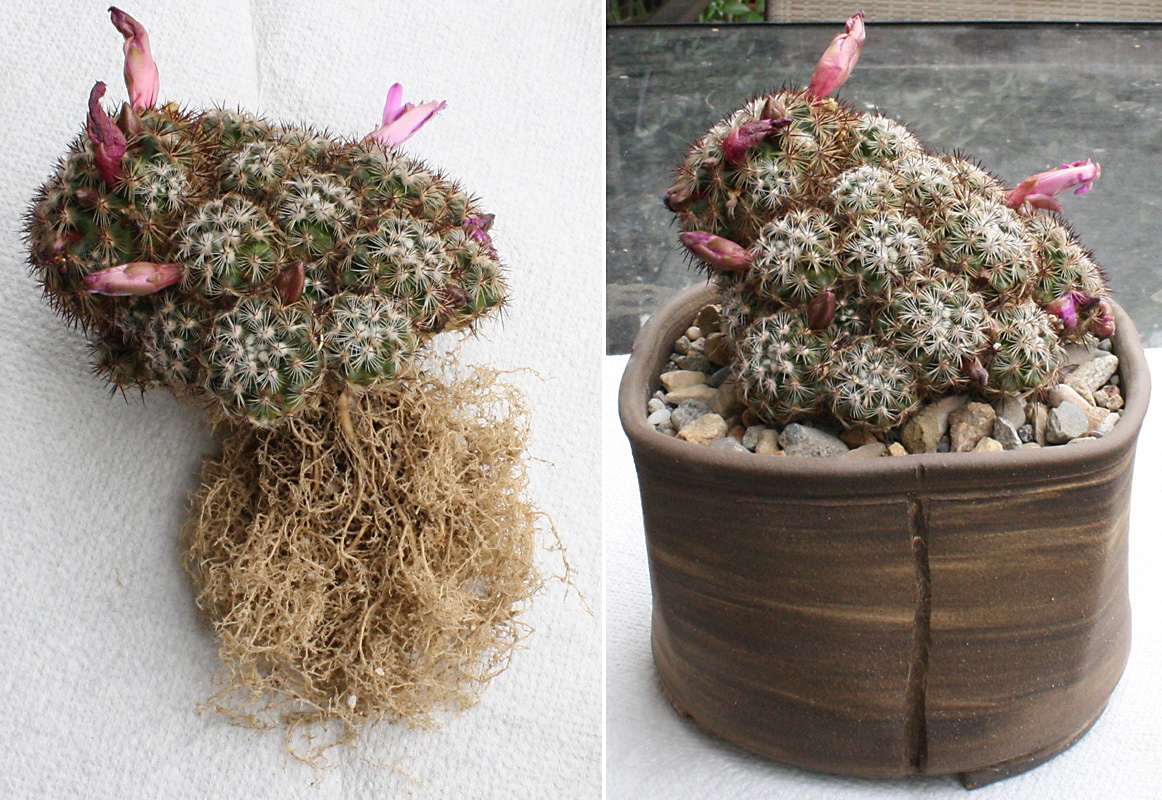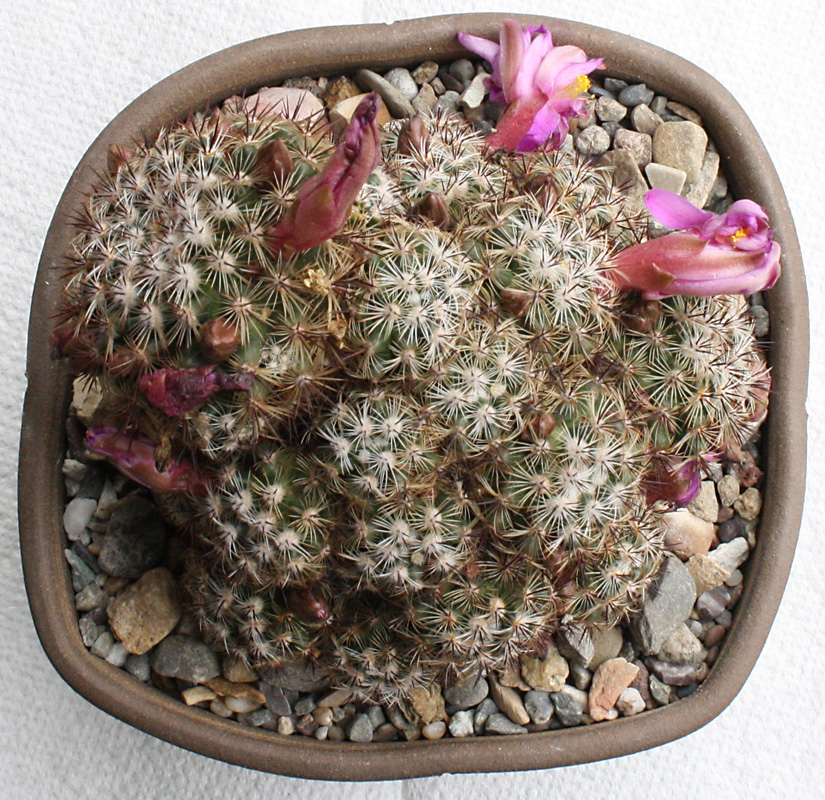Yeah, I've been away too long, haven't I? Too much stuff and not enough time to do it all, but at least I'm in a position to play catch-up now as we continue this review with...
2013: A big year as the collection expands
Space on the old one-shelf bench was getting pretty tight, but I was able to squeeze in a couple of new cacti I had my eye on. The first one I simply
had to get -- Pelecyphora strobiliformis. Pelecyphoras are very unusual, fascinating plants that are also difficult to find. Not being one to shy away from a challenge, I put a call out on the forum in early 2013. And an Arizona member by the handle of TimN answered when he told me about 2 strobiliformis he was putting up for auction on eBay. The choices were a single-head and a 4-head, so of course I went for the latter. I won the auction (score!) -- here it is right after the new acquisition landed on my doorstep (4/13/13), followed by what the plant looked like at the end of its 2nd summer in Casa de Jefferson Park (9/21/14):
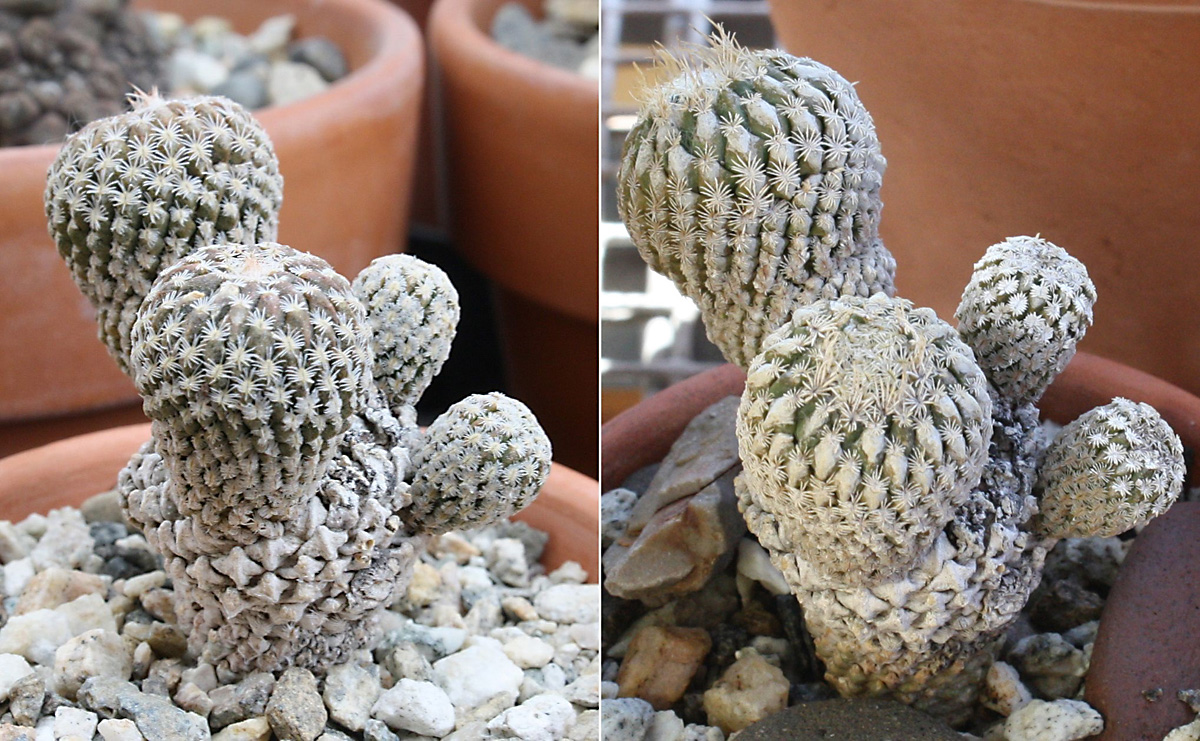
A few things worthy of note. First, the strobiliformis obviously went through a hard life as the old stem went "blind" and produced the 4 heads we're seeing here. And we are talking about
old since Pelecyphoras are very slow growers. Second, the bigger heads are in the intermediate stage going from juvenile to adult, so we'll call them subadult. When I received the plant, the smaller heads were still in the juvenile stage. Third, although I was pleased to see the strobiliformis growing in 2014, I wasn't thrilled about how much corking had advanced up the subadult heads. So what the heck happened? When I started using pumice-decomposed granite mix in 2012, the DG fines I inadvertently left in the mix were a problem that hadn't even occured to me when I potted the plant. When I discovered the problem in 2014, it was time to replace the "dirty" mineral mix with clean -- a gradual process as cacti came due for repotting. In February 2015 it was the Pelecyphora's turn, so let's compare the roots going from its date of arrival to repotting time on 2/14/15:
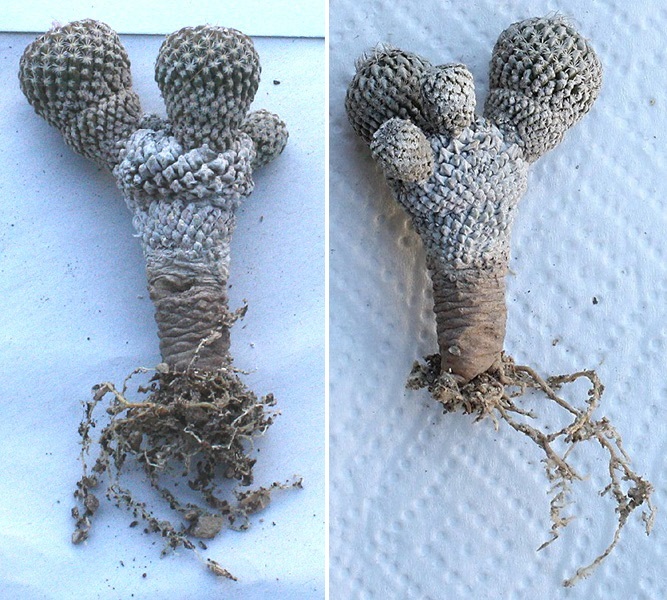
Well, there's your answer -- no wonder the strobiliformis wasn't happy! The move from terracotta and "dirty" mix to glazed ceramic and clean mix completed:
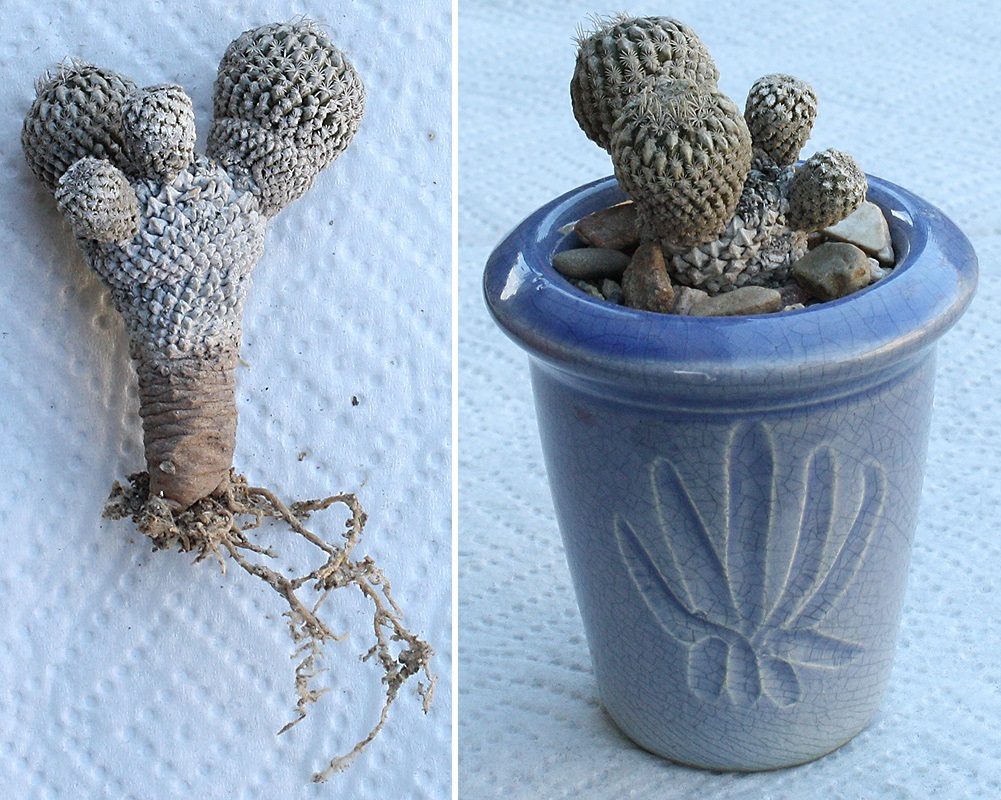
Let's find out if the strobiliformis actually started growing a new set of roots. Being a slow grower, it'll be slow to respond. If the response is good, we'll see it above-ground. Will 3 summers be long enough to clue us in? The view on 9/19/15, 9/24/16, and 9/30/17:
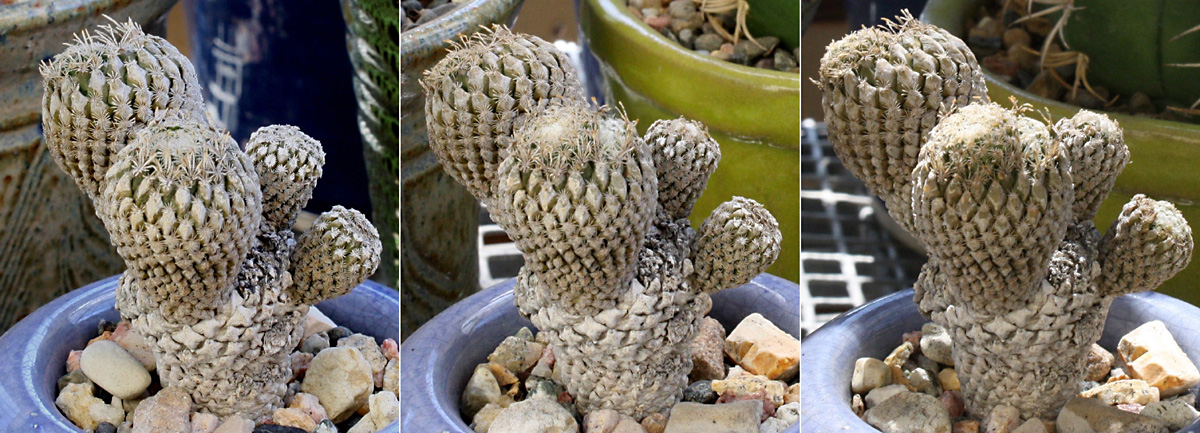
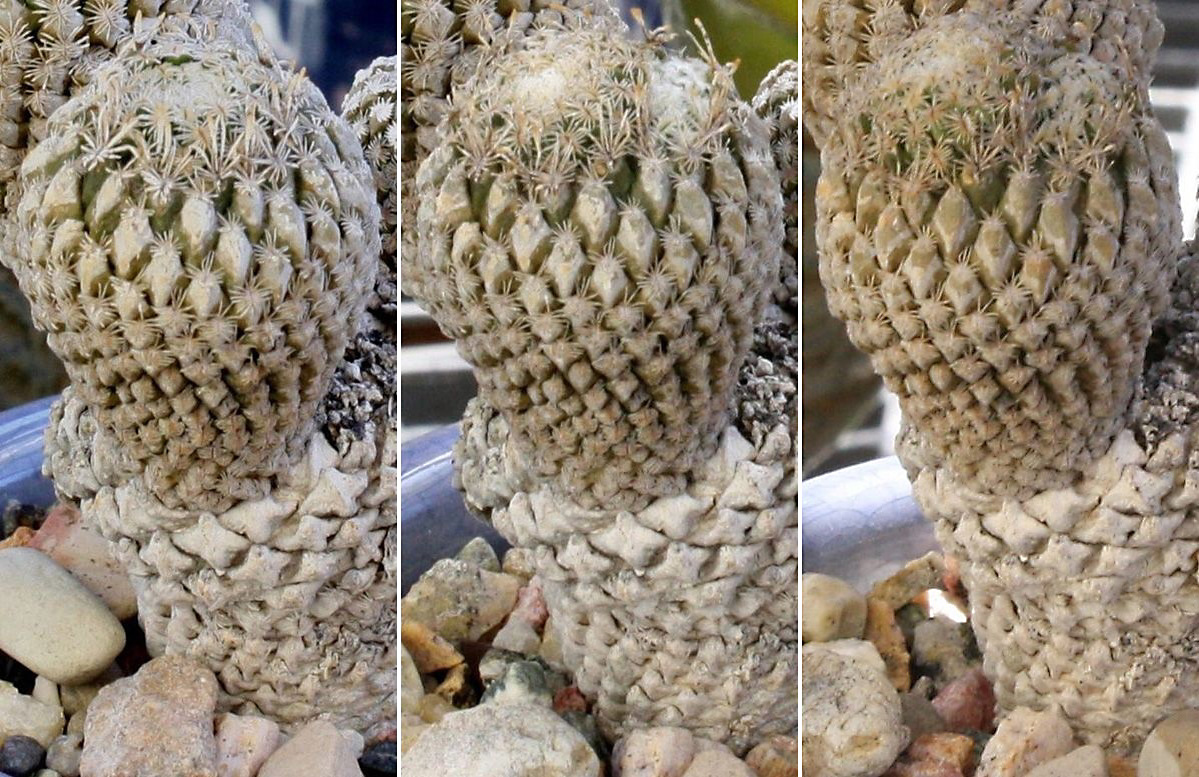
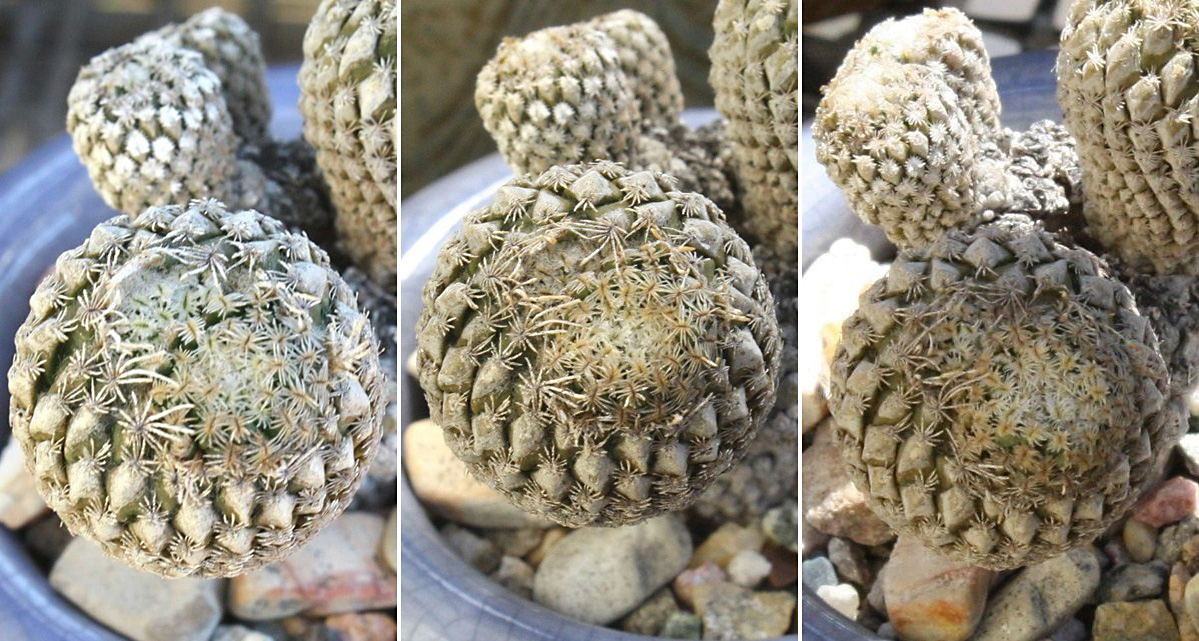
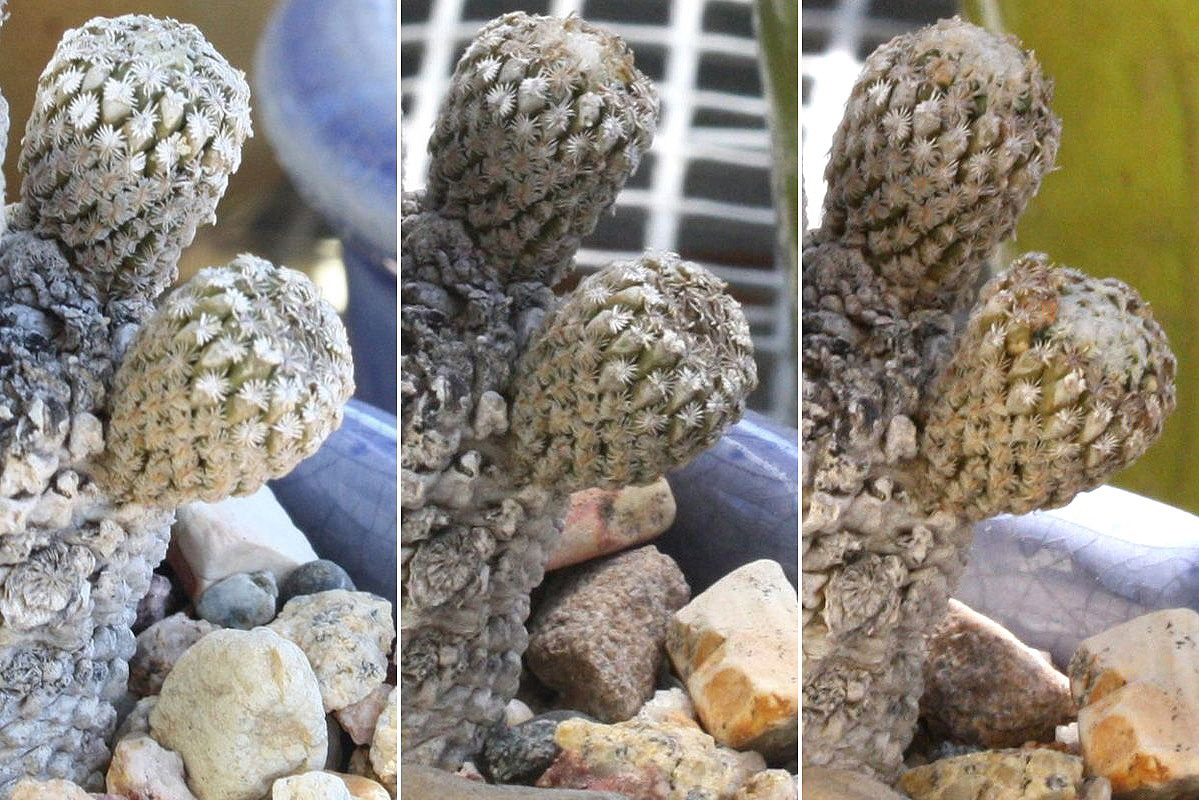
Believe it or not, the corking has actually reversed to a certain extent -- and the new growth isn't quite as slow as we'd expect, is it? In fact I'm rather pleased by the improvement, highlighted in this before-and-after comparison on 9/21/14 and 9/30/17:
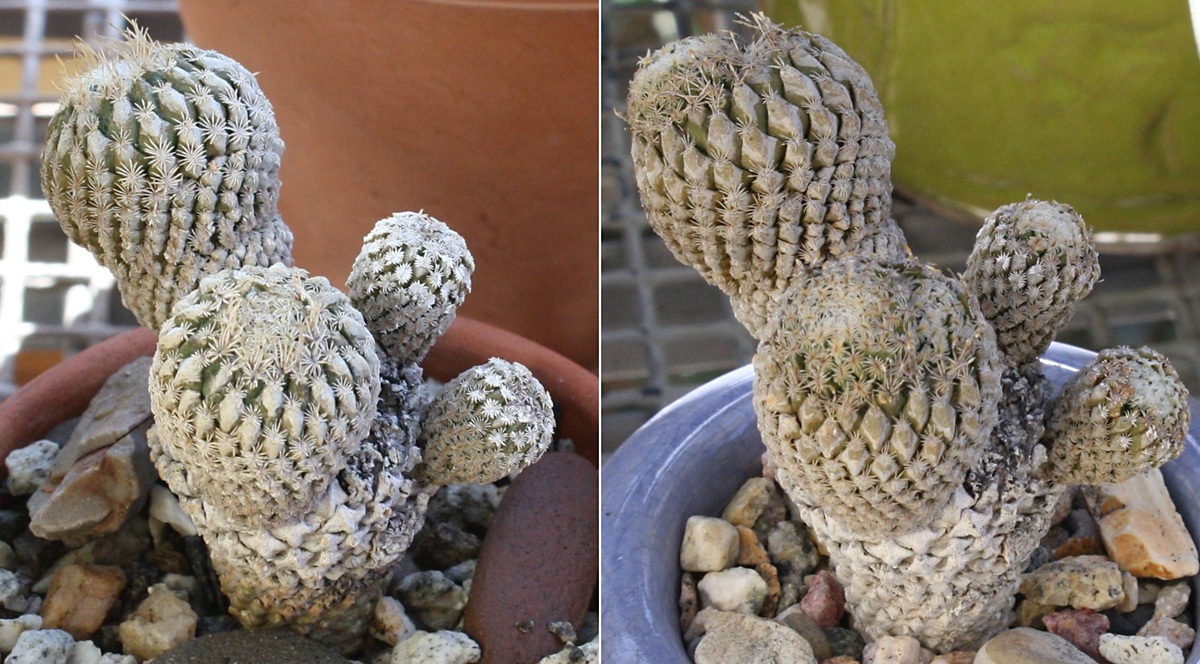
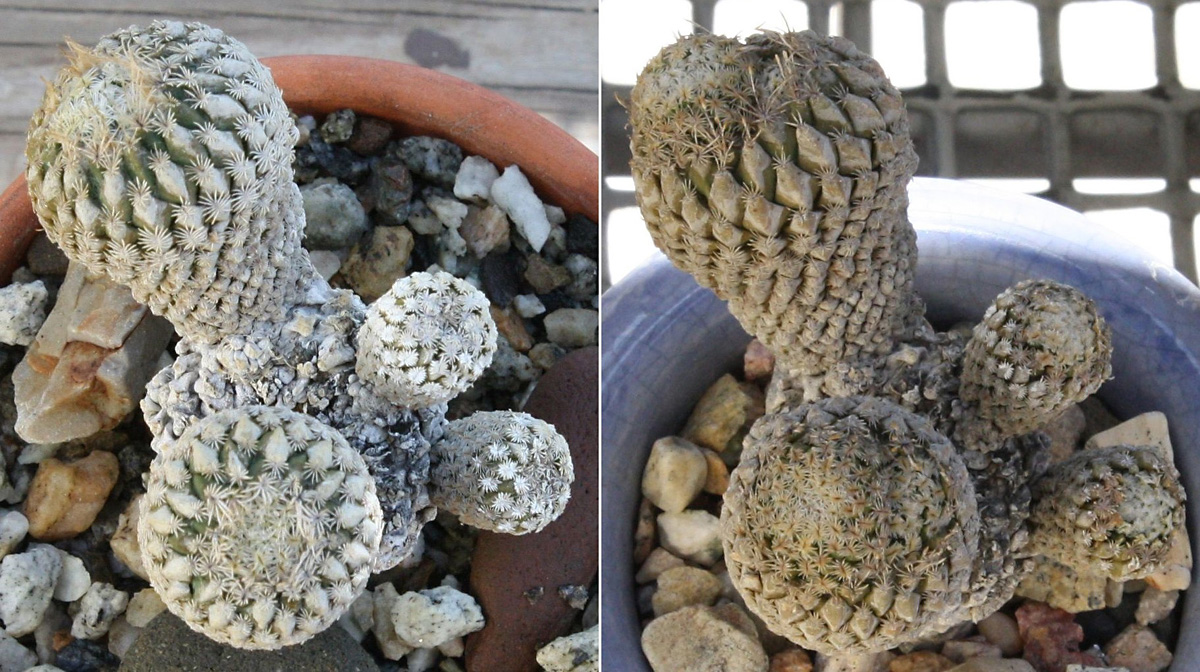
I do believe that change to clean mineral mix really did the trick! Since we have another summer coming up before you know it, the strobiliformis should rate a set of new before-and-after pics in September.
My other spring 2013 purchase was an Uebelmannia pectinifera multicostata, which I found through Kyle Williams of Kyle's Plants (back then we knew him as Saxicola, but he's been off the forum's radar screen for a long time). Here it is fresh from the wilds of Thousand Oaks on 5/3/13:
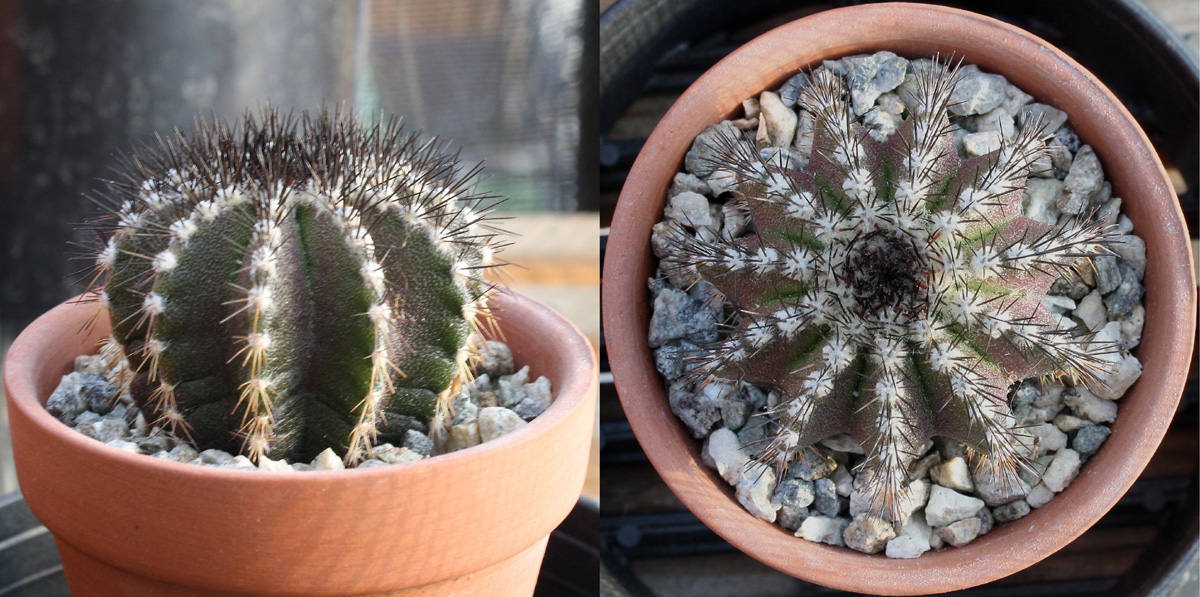
This is an update to the story I posted
here. Since the pectinifera
finally started growing last year, I thought it might be nice to show you what sort of progress we have -- 9/17/16 (not growing yet), and at the end of its first summer with a crop of new spines (10/8/17):
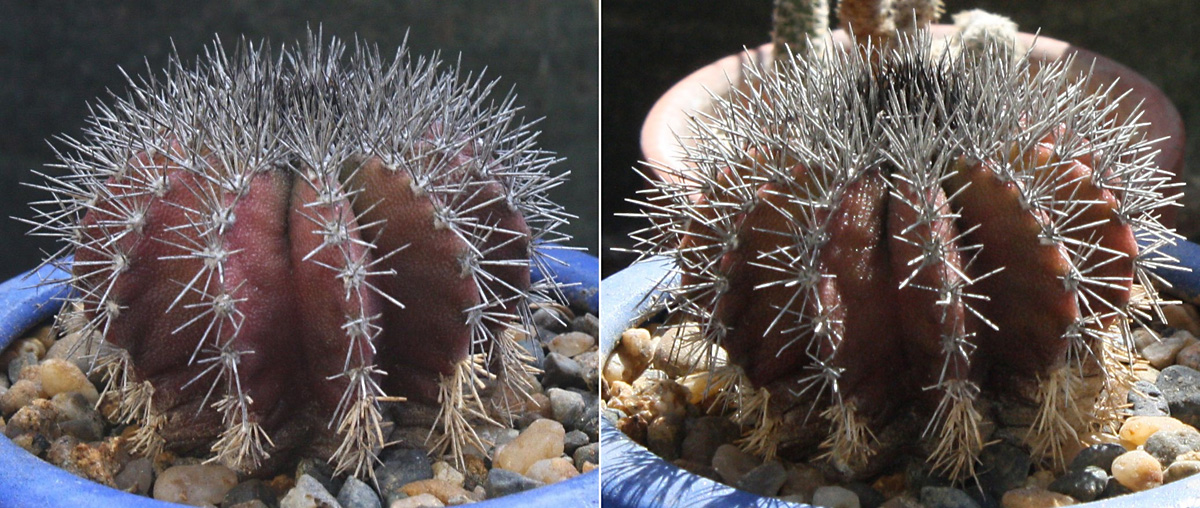
Okay, I'll admit there's not much to see from the side, but this bird's-eye view is pretty nice:

2017 was only the first year of growth for my pectinifera, so it'll be interesting to see how much new growth we'll get by the end of this summer.
After all the success I had in 2012, I was eager to expand the collection, but a single-shelf bench simply wouldn't do anymore. Being an apartment-dweller, there was no way to expand horizontally. So why not go vertical? I designed a new 2-shelf plant bench, although my handyman skills are limited at best. Luckily, I found a
genuine handyman who did excellent work building it for me, and with a few things I could do myself to finish the job, the new bench was ready for deployment on 6/30/13:
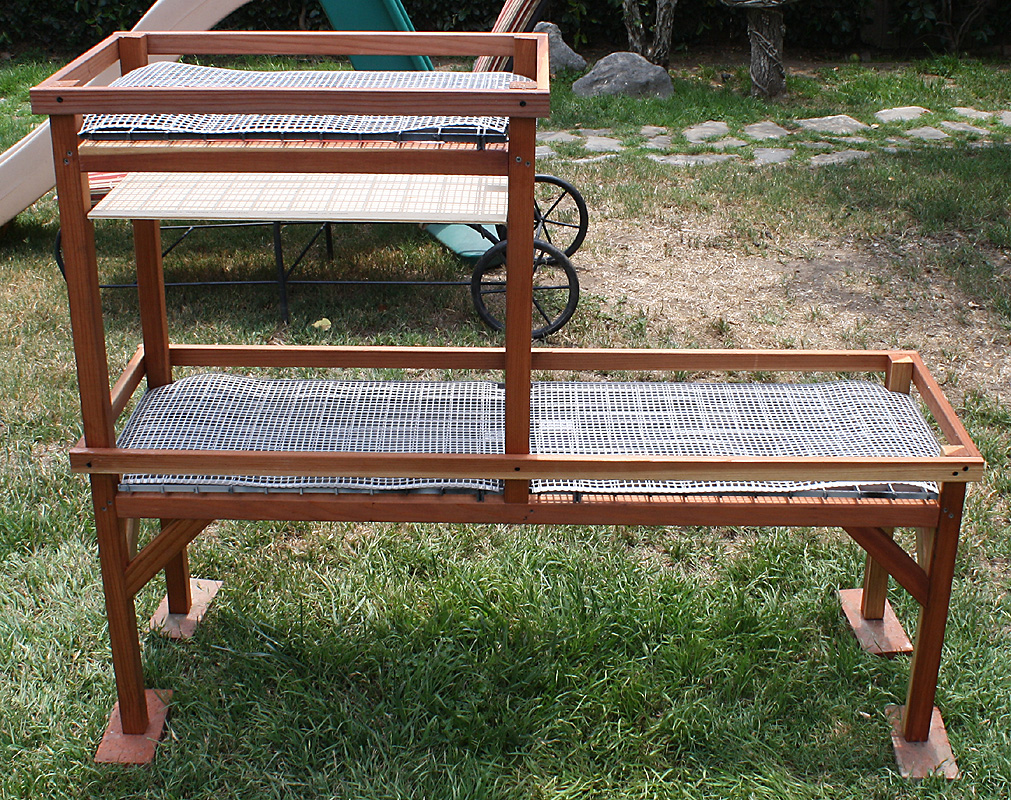
Then up the stairs it went as I installed the bench on my apartment balcony. Now I'll describe the "real estate". The top shelf is reserved for the cacti that do best with as much sun time as they can get. Under the top shelf we have Shady Glen for plants that either need shade or at least tolerate it in the middle of the day (they get a good dose of sun in the morning and late afternoon). And on the westside we have Sun Valley for cacti that get shade in the morning, then sun from midday on. Also under the top shelf -- the plywood board is a removable drip tray to keep the denizens of Shady Glen from getting splashed whenever I water the top-shelf plants. During periods of blazing summer heat, the board goes up to protect the Shady Glen cacti that would be vulnerable to sunscorch without it.
Once the existing plants occupied their new spots, it was wonderful to contemplate the empty space that needed filling. Went on a bit of a spree that summer, leading off with...
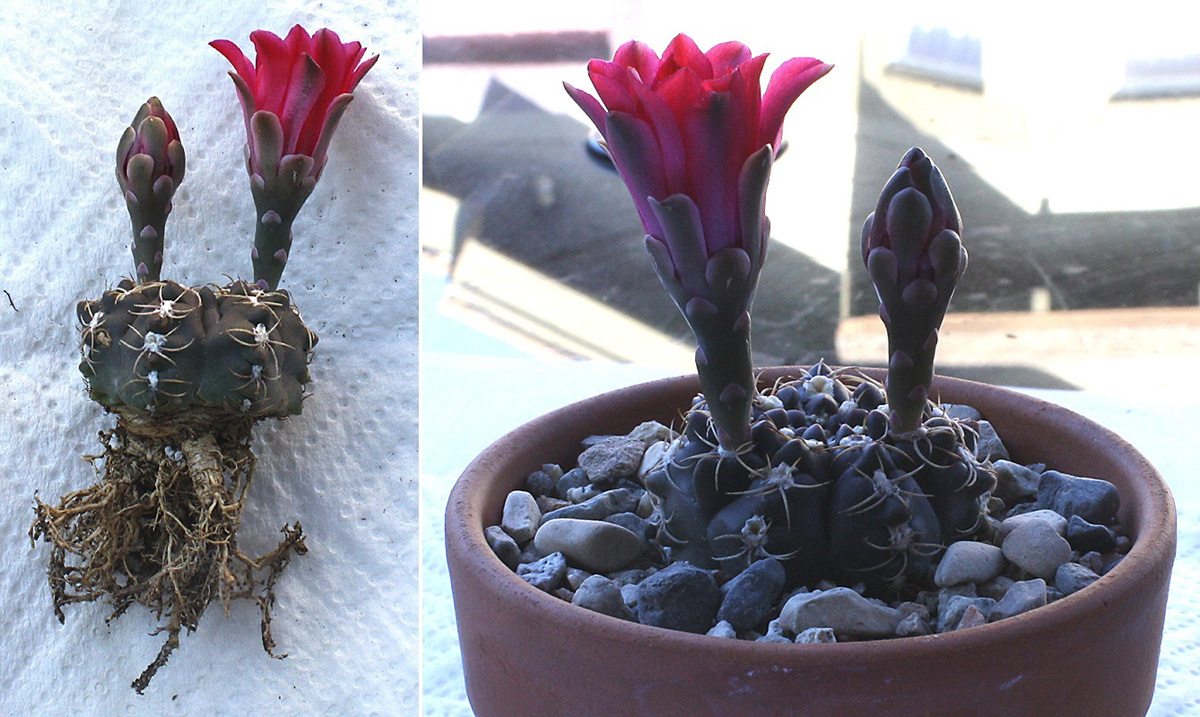
Sunset Nursery has been a fixture of L.A.'s Silverlake district for many years. Not the first place I'd go to for cacti, but I couldn't resist this lovely Gymnocalycium baldianum I found there on a lovely July 4th weekend. After 4 summers under my care, 9/22/13 followed by 10/8/17:

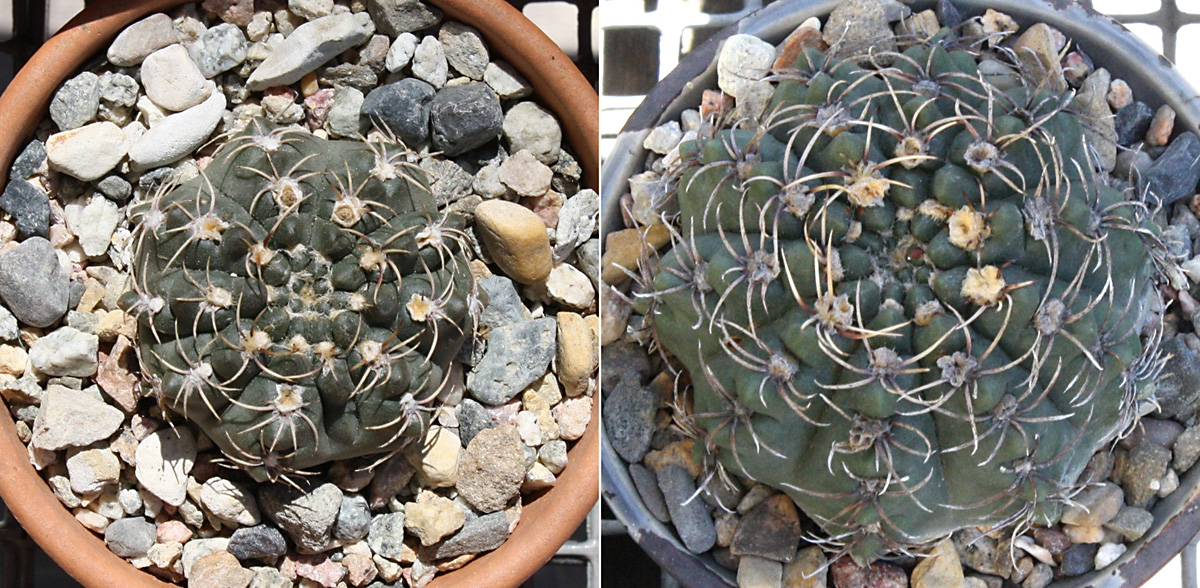
One of the baldianum's many beautiful blooms on 9/16/17:
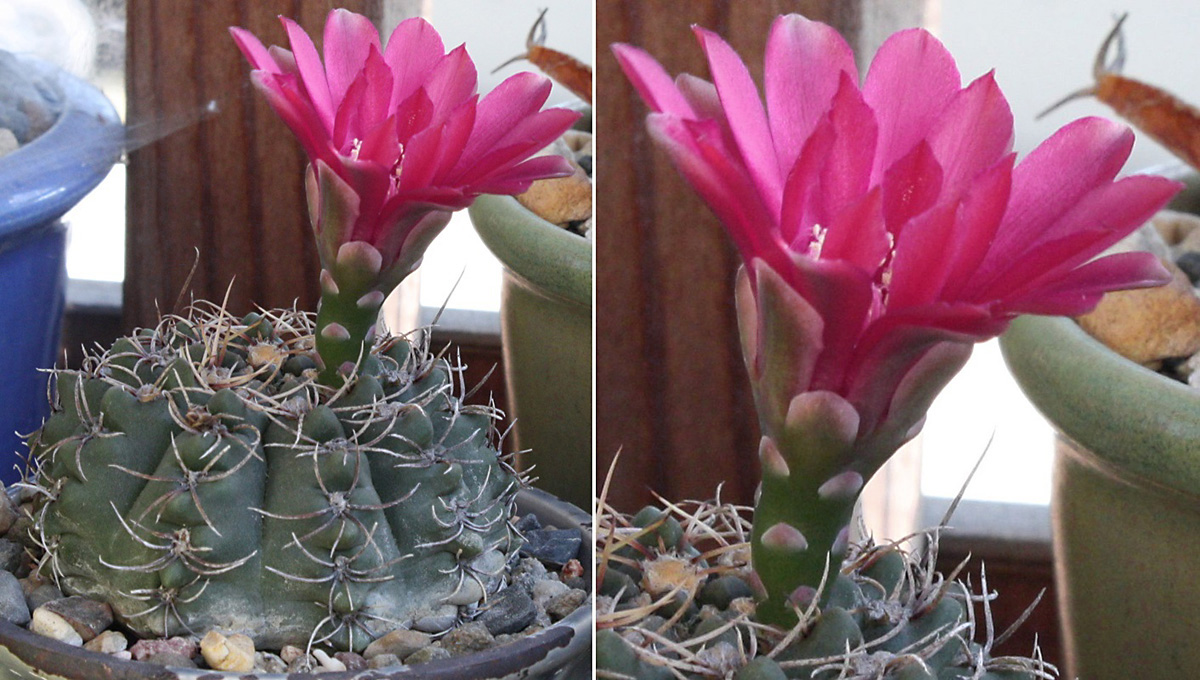

Although I love my other Gymnos, their flowers don't offer much in the way of color. G. baldianum more than makes up for it -- no Gymnocalycium fancier should be without one in his or her collection.
We're just scratching the surface here, so in the next installment, we'll have a look at the other items that came my way in the summer of 2013.
